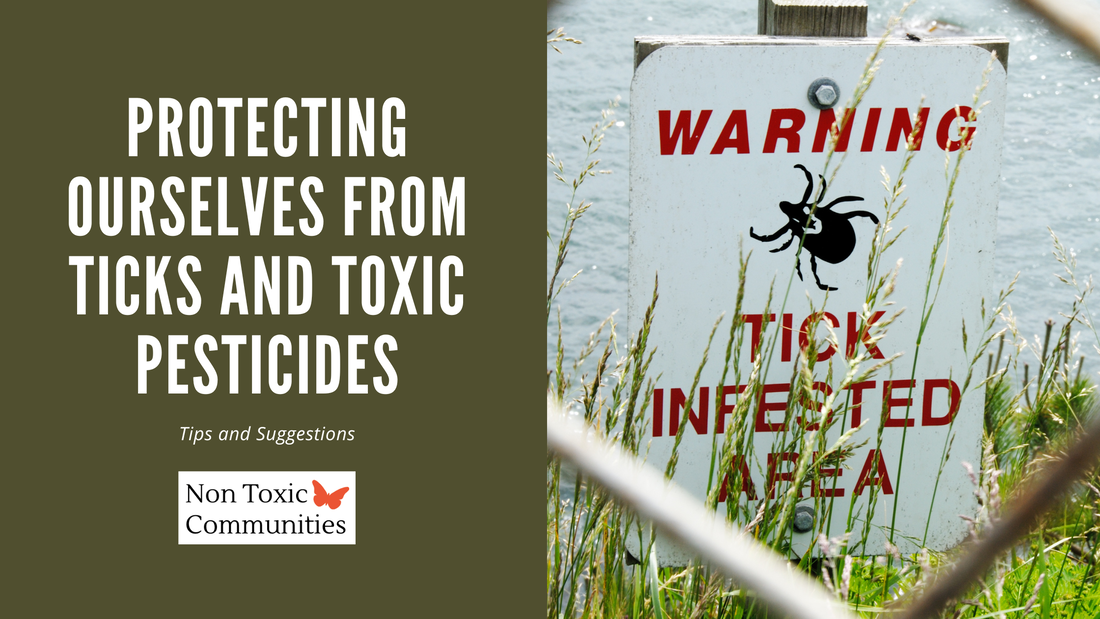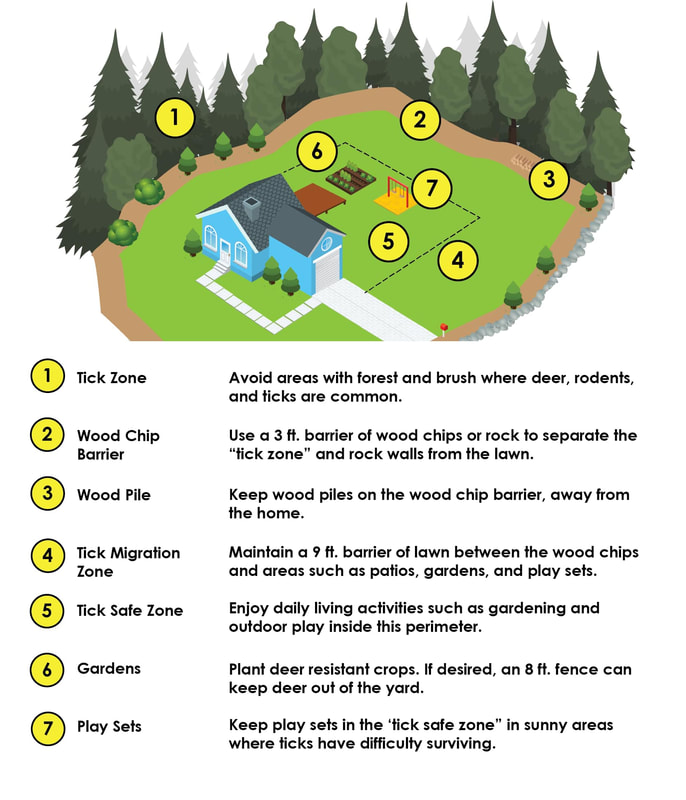|
While most insects are beneficial, there are those that can transmit diseases to humans, like ticks. It's important we prevent tick bites, but using toxic compounds presents another set of risks. Let's talk about the safest ways to keep ourselves, families, and pets safe from tick borne diseases. (**See below for tips and safer product examples**) Ticks can transmit many harmful diseases to humans, like Lyme disease, Rocky Mountain spotted fever and more. Most often, DEET and synthetic pyrethroids like permethrin are recommended to prevent tick bites - but these commonly used chemicals can be very harmful in their own right. Repellents and pesticides often contain 'inert' ingredients that are undisclosed, and consideration of exposures to combinations and mixtures are not part of the registration process for the active ingredients. This can make it even more difficult to assess the risk of using a product. It is imperative that we do what we can to prevent the serious and debilitating illnesses spread by ticks, but the answer is not to expose ourselves, children, pets and the environment to chronic low doses of toxic chemicals over a lifetime. Luckily, it's easier than ever to make responsible choices that will keep us safe from both tick bites and toxic chemicals. Here are some suggested tips, and examples of products to get you started.
Click on the titles below to expand and view safer product suggestions AlTERNATIVES TO DEET
Examples of products with ingredients that are alternatives to synthetic DEET, like essential oils and plant extracts. Other alternative active ingredients like Picaridin, IR3535 and Oil of Lemon Eucalyptus (OLE) or para-menthane-3,8-diol (PMD, the synthesized version of OLE) may also be considered as options. Adios All Terrain Badger Balm Buzz Away Extreme Cedarcide Green Mountain Repellants Just Naturals Murphy's Naturals lemon eucalyptus oil Nantucket Spider (citronella free) Nature's Cloak Ticks N All Wondercide Mamavation's list of DEET-free Bug Sprays (See the "Best" list) AlTERNATIVES TO PERMETHRIN
BioUD is a commercially available alternative to use on clothing instead of treating with permethrin. The active ingredient is 2-undecanone, a naturally occurring compound isolated from tomato plants. It has been found to be as effective as DEET and more effective than permethrin in field trials. Least toxic INSEcticides
Examples of products with ingredients that are alternatives to synthetic pyrethroids that are allowed by NOFA Standards for organic land care. Habitat modification is preferred. Spraying, even with a natural insecticide product, should be a last line of defense, only to be used selectively and judiciously to protect pollinators and other beneficial insects. Always follow label directions exactly if applying a product yourself. Essentria IC3 (found to be as effective as bifenthrin at reducing ticks) Cedar Oil Industries Mosquito Barrier Cedarcide Wondercide Beneficial nematodes safer Flea & Tick treatments for pets
protective clothing
For those who may have sensitivity to essential oils or other naturally derived repellents, or when you just want some additional protection, wearable netting like this is also an option. Lists are for educational purposes and suggestions only, not an endorsement of a specific company, product or brand. REMEMBER: Spraying Alone is Ineffective - Personal Protective Measures and Habitat Modification Are Always Necessary - Habitat modification is your first line of defense and should come before spraying anything, even natural products. A randomized control study conducted on the effectiveness of bifrenthrin over the course of two years found that while the pesticides did reduce the number of ticks, they did not make any significant difference in the number of tick encounters, or the incidence of tick-borne illness. This suggests that people are being exposed in other places, not just at home. This underscores the need for appropriate use of repellents and least-toxic management strategies for both homeowners and public recreational areas. Synthetic pyrethroids, like bifenthrin used in the study previously mentioned, are commonly used as a yard and clothing treatment for ticks. Like the widely used permethrin, they work by by interfering with basic nerve cell functioning. Studies in mice and rats show that sub-lethal intoxication leads to aggression, hypersensitivity to external stimulation, whole-body tremor, convulsions and paralysis. Permethrin binds tightly to soil and household dust. Permethrin is highly toxic to bees, fish and aquatic organisms. Studies on permethrin have linked it to increased risk of neurodevelopmental disorders, and shown it can interfere with the hormones in our bodies. A study of the chemical breakdown products of permethrin suggests they may even be 100x more active as an endocrine disruptor than the parent chemical. Exposure to both DEET and permethrin combined can amplify their toxicity. DEET has been linked to brain dysfunction, and reproductive issues in worms. Layering our protective measures and choosing safer active ingredients like cedar oil, oil of lemon eucalyptus, or 2-undecanone can help us avoid exposure to toxic pesticides while also being effective at repelling ticks. Let’s all do our part to increase awareness of the serious threat of both tick-borne illness and pesticide exposure, and use that knowledge to protect ourselves and others. For more information see Mosquitoes & Ticks |
Archives
March 2024
Categories |
|
Non Toxic Communities is a 501 (c) (3) charitable organization
Nontoxic Communities Foundation, Inc. dba Non Toxic Communities Copyright © 2024 Non Toxic Communities - All Rights Reserved Site design by Bee Rooted | About Us | Contact Us |


 RSS Feed
RSS Feed
